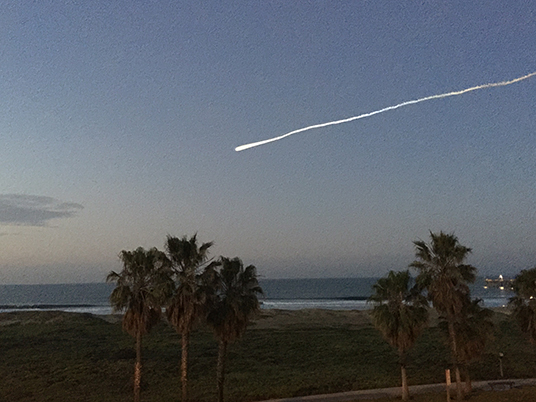Ask NASA Climate | February 3, 2015, 10:54 PST
A 'gem in the sky'

The Delta II rocket carrying SMAP into space, as seen from Port Hueneme, Ventura. Credit: Jim Hoffman
Launches are a huge deal at NASA. It's a time when we get to celebrate the intersection between science, technology and engineering. From an engineering point of view, launches are the product that you’ve delivered — the big hurrah.
It’s the opportunity for all the people who worked on the project to see the outcome of their efforts; what they've poured their life into. It’s a career-fulfilling moment.
The latest such occasion came on Saturday, January 31, at 6:22 a.m. PST, when NASA’s Soil Moisture Active Passive (SMAP) satellite launched aboard a United Launch Alliance Delta II rocket from Vandenberg Air Force Base in California.
On that morning, Jim Hoffman (JPL Earth science business operations manager) and his wife Jodie were up early near one of their favorite beaches in Port Hueneme in Ventura. They love the quiet of the morning and the chance to get focused. After texting friends who were at the launch site, they looked up toward the north and saw what looked like a red jet. They watched as it grew and grew until they knew it was the rocket.
“I like to spend time searching for sea glass from that beach,” Jim told me, “but this morning I found the gem in the sky.”
I look forward to your comments.
Laura
